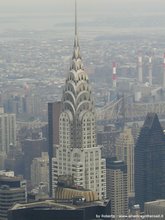Read original...Civic Coalition Calls For End To Rail Noise, Odors
 More than 100 residents and civic activists took part in a march through Glendale and Ridgewood last Saturday, Apr. 24, organized by Civics United for Railroad and Environmental Solutions (CURES) in an effort to call attention to quality-of-life problems caused by local freight rail traffic. The march started at the corner of 69th Street and Otto Road and proceeded to Mafera Park in Ridgewood, where a press conference was held regarding legislation aimed at forcing rail companies to seal container cars filled with rotting trash.
More than 100 residents and civic activists took part in a march through Glendale and Ridgewood last Saturday, Apr. 24, organized by Civics United for Railroad and Environmental Solutions (CURES) in an effort to call attention to quality-of-life problems caused by local freight rail traffic. The march started at the corner of 69th Street and Otto Road and proceeded to Mafera Park in Ridgewood, where a press conference was held regarding legislation aimed at forcing rail companies to seal container cars filled with rotting trash.
Fed up with loud noise and noxious fumes emanated by local freight rail traffic, scores of residents took to the streets of Ridgewood and Glendale last Saturday morning, Apr. 24, calling for train reforms which they hope will improve their quality of life. More than 100 residents, civic leaders and elected officials turned out for the event organized by Civics United for Railroad and Environmental Solutions (CURES) to support efforts to reform freight operations along rail lines running through both neighborhoods as well as Maspeth and Middle Village.
Starting with a march from the intersection of 69th Street and Otto Road in Glendale to Mafera Park in Ridgewood and ending with a press conference and cleanup, participants carried banners and offered chants urging local rail companies to change the way they operate in the area, including ending noisy overnight operations, sealing container cars full of rotting garbage and retrofitting diesel locomotives with fuel-efficient hybrid engines.
The CURES coalition, which is comprised of more than a dozen community groups in the Community Board 5 area, was formed late last year in response to numerous complaints that arose from residents around Ridgewood, Glendale, Maspeth and Middle Village regarding local train lines in each neighborhood.
Among the civic groups taking part in CURES which were represented at the rally include the Citizens for a Better Ridgewood, Farmers Oval Civic Association, Glendale Civic Association, Glendale Property Owners Association, Juniper Park Civic Association, Liberty Park Home Owners Association and the Maspeth West End Block Association.
Leading the charge was Glendale resident Mary Parisen, who co-chairs CURES along with her neighbor Mary Arnold. Parisen spoke of a host of problems related to the hauling of container cars full of rotting household garbage through local communities along lines operated by the New York and Atlantic Railway (NYA) and CSX.
As previously reported in this newspaper, local residents have complained over recent months about the unpleasant aroma of putrefying garbage in cars stored—sometimes for many hours—along the CSX line heading northbound from the Fresh Pond Railyard in Glendale through Middle Village. The noxious odors, neighbors living near the tracks claimed, have made it nearly impossible to leave their windows open during warm weather or stand outside without feeling nauseated.
Arnold told the Times Newsweekly the quality of life problems related to train traffic are also forcing residents to leave the community. She noted that some landlords have a difficult time renting their properties to prospective tenants since they are located close to local rail lines.
Changing the locomotives
Following last Saturday’s rally, CURES members were informed by the New York and Atlantic Railway (NYA), which operates out of the Fresh Pond Railyard in Glendale, will upgrade its fleet of 11 locomotives with equipment designed to reduce their emissions. The $1 million effort will reportedly be funded through a grant from the U.S. Department of Transportation’s Congestion Mitigation and Air Quality program.
“It’s an improvement,” according to a CURES statement regarding the NYA plan, which noted that the U.S. Environmental Protection Administration (EPA) “has gone on record to say that locomotive repowering is what we need to reduce diesel emissions.” Locomotive repowering would require the current diesel engines used by each locomotive to be replaced with engine designs that are more fuel efficient.


Click on images to enlarge...
“The NYA announcement is a very small step in addressing the quality of life problems of people living near the railroad tracks,” added Robert Holden, president of the Juniper Park Civic Association, which is part of the CURES coalition. “Lowering emissions on NYA locomotives by one-third is fine, but what about CSX locomotives which are the ones causing the problems in Middle Village? CSX and NYA are currently using the railroad track area in Middle Village as a rail yard and crews work on trains at 4 and 5 a.m.”
“Finding a quick solution to this unbearable air and noise pollution problem is our number one concern,” Holden concluded. “Middle Village residents finally getting a good night’s sleep would be a cause for a celebration.”
Sealing the stink train
Among those in attendance were Assemblyman Andrew Hevesi, who informed residents during the press conference that he has introduced several bills in the state legislature aimed at requiring freight operators to put hard lids atop cars containing putrescible waste, which would block foul odors from spreading to nearby homes.
Joining Hevesi at the conference were several other elected officials including Assemblyman Mike Miller, State Sen. Joseph Addabbo and City Council Member Elizabeth Crowley.
Hevesi touted the legislation he introduced into the State Assembly as a possible solution to the problem. In addition to a bill requiring all train companies to apply hard, impenetrable seals atop cars containing putrescible waste, he also authored a bill that would increase penalties against companies which ignore this requirement.
The assemblyman previously described the legislation at the JPCA’s Mar. 25 meeting in Middle Village. During the session, he informed residents that the proposed bills would force shipping companies to install the solid lids at waste management facilities, which are under state jurisdiction. Train yards and tracks fall under federal oversight and are exempt from state regulation under the Interstate Commerce Clause in the Constitution.
Arnold noted that the proposed legislation is “a step in the right direction,” adding that CURES would continue to work with local lawmakers and railroad operators to ensure that other reforms are implemented in the weeks and months ahead.







































